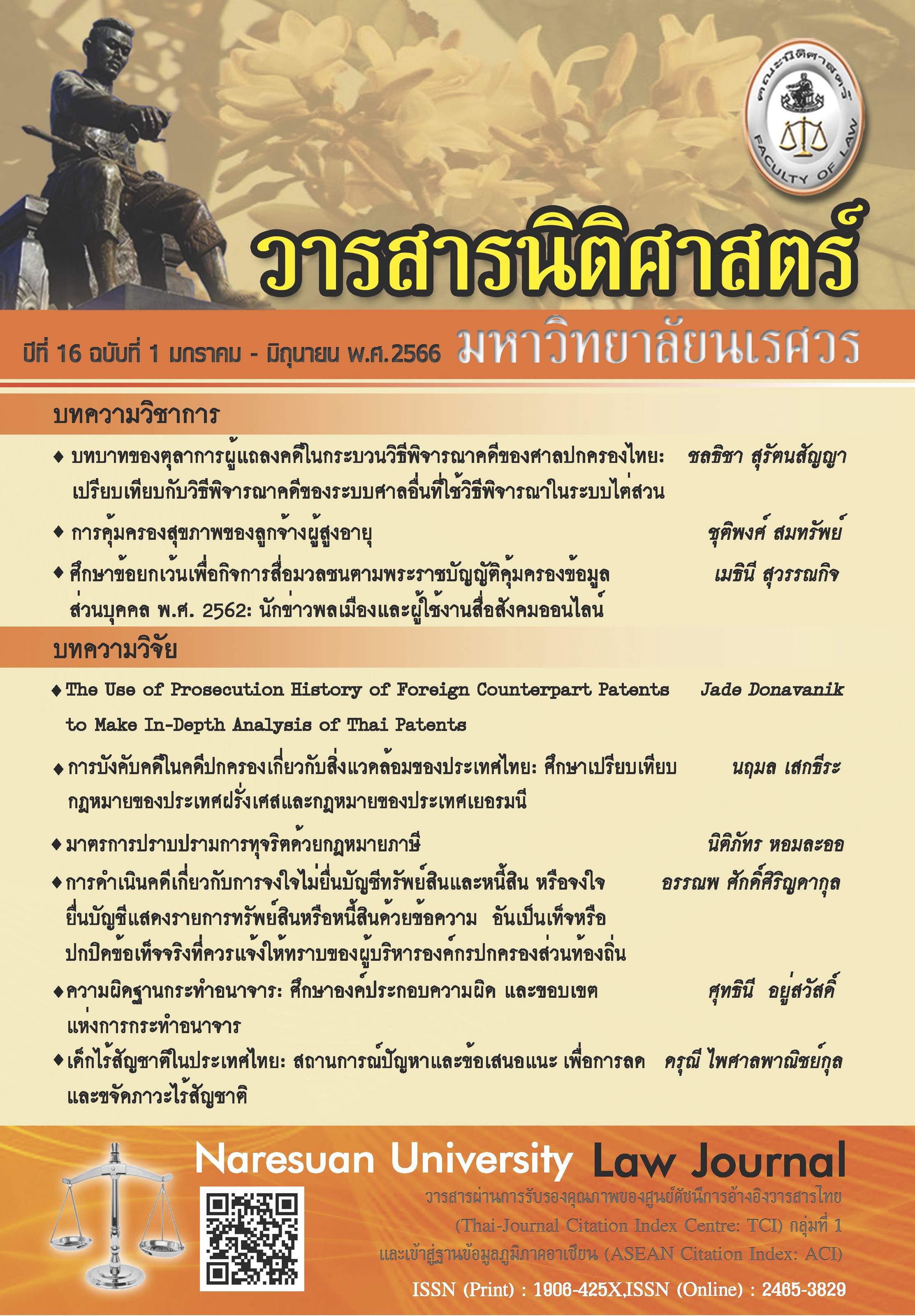Ending and Protecting Child Statelessness in Thailand: Developing an Accelerated Nationality Review Model
Main Article Content
Abstract
Since the decade of B.E 2510 (1967), Thailand has been initiating the policy and enforcing laws to reduce and alleviate statelessness for children from stateless families. Significant progress in law and policy was found during the decade of B.E. 2540-2550 (1997-2007). However, considering the current stateless population, the number of stateless people has not decreased significantly. Due to the fact that the number of stateless children who were born is not likely to increase, this research aims to review the situation of stateless children in Thailand by analyzing laws and policies and collecting data from the field site. Field data collection was carried out by interviewing 28 NGOs that provide legal assistance to stateless people, five government departments, and four hospitals in 13 provinces. This study found that Thailand can be considered to have laws and policies that target to prevent statelessness and prevent the risks of people being statelessness. This research has suggestions for the improvement of various mechanisms that it needs to develop criteria and manuals for addressing statelessness, such as the case of birth registration, (especially, overdue birth registration) and case of resident registration. The process of developing such guidelines and policies should be participatory and listens to the perspective of civil society and academia. Moreover, the criteria and guidelines in legal should be flexible and relaxed to be able to address the statelessness issue. Additionally, these solutions should be more consistent with the real situation of stateless children in Thailand. Finally, the legal system should be initiated to protect stateless children as well as their families to be able to live in Thailand.
Article Details
References
Darunee Paisanpanichkul, Chuti Ngam-Urulert, Luernhom Saifha, and Sarinya Kitprayoon. Nationality Procedures in Thailand: Bottlenecks Analysis and Recommendations in Addressing Implementation Challenges. Bangkok: United Nations High Commissioner for Refugees-Thailand, 2561: 1-10 [In Thai]
Darunee Paisanpanichkul. “47th Years of the Alienated Citizen from the Alienated Lane.” CMU Journal of Law and Social Sciences 12, no. 2 (2019): 157-178. [In Thai]
Darunee Paisanpanichkul. “After Border Crossing: Legal Status of Ethnic Migrants in Thailand.” CMU Journal of Law and Social Sciences 9, no. 2 (2016): 170-205. [In Thai]
UNHCR Good Practices Paper “Action 3: Removing Gender Discrimination from Nationality Laws.” Accessed May 12, 2020. https://www.refworld.org/docid/54f8377d4.html.
UNHCR Good Practices Paper “Action 6: Establishing Statelessness Determination Procedures to Protect Stateless Persons.” Accessed May 12, 2020. https://www.refworld.org/docid/5f203d0e4.html.
UNHCR Good Practices Paper “Action 7: Ensuring birth registration for the prevention of statelessness.” Accessed May 12, 2020. https://www.refworld.org/docid/5a0ac8f94.html.
UNHCR Good Practices Paper “Action 9: Acceding to the UN Statelessness Conventions.” Accessed May 12, 2020. https://www.refworld.org/docid/553f617f4.html.
UNHCR Good Practices Paper. “Action 1: Resolving Existing Major Situations of Statelessness.” Accessed May 12, 2020. https://www.refworld.org/docid/54e75a244.html.
UNHCR Good Practices Paper. “Action 2: Ensuring that no child is born stateless.” Accessed May 12, 2020. https://www.refworld.org/docid/58cfab014.html.


